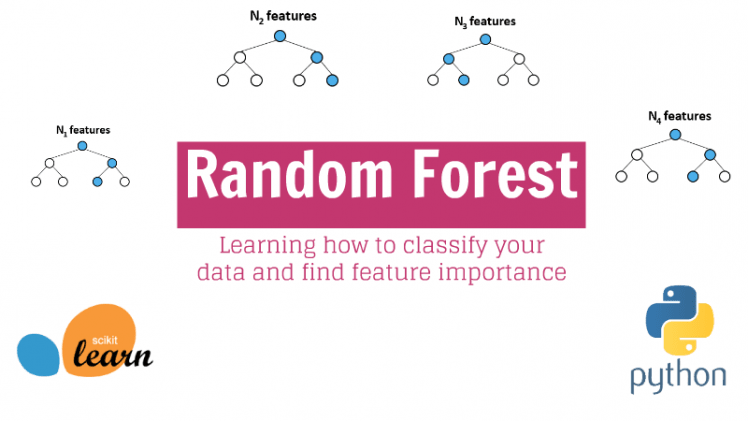Summary Table:
| Parameter | Description |
|---|---|
| multi_class=’ovr’ | One-vs-Rest (OvR) strategy computes the average of the ROC AUC scores for each class against all other classes. |
| average=None | Returns the score for each class, instead of computing the average across all classes. |
In the realm of Python’s Scikit-Learn library, the function roc_auc_score is used to compute the Area Under the Receiver Operating Characteristic Curve (also known as ROC AUC) from prediction scores.
The multi_class parameter specifies the computation method to employ when the target variable is multiclass. The ‘ovr’ value stands for One-vs-Rest: this approach entails fitting one classifier per class, with the samples of that class forming the positive group and all other samples forming the negative group. The OvR strategy essentially computes the average of the ROC AUC scores for each class against all other classes.
When dealing with multiple classes in our dataset, setting average=None in the roc_auc_score function will return the scores for each class individually instead of delivering an averaged final score. This feature gives you a more granified view of how your classification model is performing per class level. You’ll be able to discern if the model was particularly good at identifying one class but struggled with another, which could be critical information for your use case.
To further clarify, let’s consider an example where we have three classes A, B, C and the average = None would result in three distinct AUC scores instead of one average score. These individual AUC scores can then be useful in a myriad of ways like adjusting class weights, re-sampling techniques or tailoring custom loss functions to improve your model where it’s lagging.
For more in-depth understanding, you may refer to the sklearn documentation.
Understanding Sklearn’s roc_auc_score in depth requires familiarity with various concepts used to evaluate machine learning models, including the Receiver Operating Characteristic (ROC) curve and the Area Under Curve (AUC). When it comes to multi-class options, you’ll often find these being used: ‘ovr’ (one-vs-rest) and ‘ovo’ (one-vs-one).
Let’s start with roc_auc_score, a powerful metrics used for binary classification problems. It measures the full range of classifier’s discrimination capacity, as opposed to accuracy which depends on the selected threshold.
To compute ROC AUC:
from sklearn.metrics import roc_auc_score roc_auc = roc_auc_score(y_true, y_score)
Where:
–
y_true
is the true binary labels.
–
y_score
is the target scores, can either be probability estimates or non-thresholded decision values.
Now, let’s discuss about
multi_class
parameter. According to Scikit-learn documentation, it can have 3 different types: “raise”, “ovr” or “ovo”.
In your query, we’re interested in “ovr” (one-vs-rest) which basically involves training a single classifier per class, with the samples of that class labeled as positive and all other samples marked as negative.
When
multi_class=’ovr’
,
roc_auc_score
calculates the AUC of each class against the rest:
roc_auc = roc_auc_score(y_true, y_score, multi_class='ovr')
Then we come to
average
part. The
average
parameter controls the method for averaging the individual ROC AUC scores obtained in the case of multi-label or multi-class inputs. It can have these types: ‘micro’, ‘macro’, ‘samples’, ‘weighted’ or None. If not explicitly given, ‘macro’ is used by default.
However, when
multi_class="ovr"
is set, the documentation specifically states that
average=None
should produce an array output with the average score for each class. But the surprising fact that this doesn’t work always in such cases become a matter of concern. Although ideally it’d be great to have such feature implementation, in practicality this is not available yet due to certain limitations.
The understanding around Sklearn’s roc_auc_score definitely includes a lot of intricate details related to its parameters along with their functionalities. Though having area under each class separately would help fine tune the models better, currently working around with available averages like micro, macro provides a reasonable control over the model performances.
The ‘Multi_Class’ and ‘average’ parameters greatly influence the output of the roc_auc_score function from the Scikit-learn Python library. Here, we focus on how these parameters function in a multi-class setting where Multi_Class is set to ‘ovr’.
roc_auc_score(y_true, y_score, *, average='macro', sample_weight=None, max_fpr=None, multi_class='raise', labels=None)
Sklearn’s roc_auc_score function calculates the Area Under the Receiver Operating Characteristic Curve (ROC AUC) from prediction scores.
Now let’s get into it:
multi_class Parameter
The ‘multi_class’ parameter, when set to ‘ovr’ (‘One-Vs-Rest’), computes the roc_auc_score for each class against the rest. This setting is recommended for multi-class problems. In the context of roc_auc_score, the ‘multi_class=”ovr”‘ configuration essentially instructs the algorithm to treat each distinct class as a binary problem, calculating an ROC curve for each class individually and treating other classes as ‘the rest’.

- ‘ovr’: Computes the AUC of each class against the rest [3 * (A vs. B&C), 1 * (B vs. A&C), 2 * (C vs. A&B)]. This method treats the multiclass case as if it were a binary case.
average Parameter
The ‘average’ parameter determines the method to compute the final score based on the individual class scores. However, not all forms of averages improve the performance with multiclasses. For instance, ‘None’ simply returns the score for each class. Notably, when ‘multi_class’ is set to ‘ovr’, the ‘average’ cannot be ‘None’. Here’s why:
- ‘None’: It implies that the scores for each class are returned. But this is not feasible in the ‘ovr’ scenario as it would lead to ambiguities in identifying which class the score corresponds to.
To sum up, ‘multi_class=”ovr”‘ works well for multi-class scenarios by treating them like multiple binary cases. However, when used alongside ‘average=None’, it’s not beneficial because there wouldn’t be a clear correlation between computed scores and their corresponding classes.
Referencing to the official Scikit-learn documentation, will provide deeper insights for understanding these parameters.
Sample:
Consider a scenario where you are building a multinomial classifier with ‘class A’, ‘class B’ and ‘class C’. You may use Sklearn’s roc_auc_socre with ‘mutli_class=”ovr”‘ like this:
# Importing necessary libraries
from sklearn.metrics import roc_auc_score
from sklearn import datasets
from sklearn.multiclass import OneVsRestClassifier
from sklearn.svm import SVC
from sklearn.model_selection import train_test_split
# Loading iris dataset
iris = datasets.load_iris()
X, y = iris.data, iris.target
# Train-test split
X_train, X_test, y_train, y_test = train_test_split(X, y, test_size=0.2, random_state=42)
# Build One-vs-rest classifier
clf = OneVsRestClassifier(SVC()).fit(X_train, y_train)
# Predict probabilities
prediction = clf.predict_proba(X_test)
# Compute ROC AUC score
roc_auc_ovr = roc_auc_score(y_test, prediction, multi_class="ovr")
print("The ROC AUC Score:", roc_auc_ovr)
Sklearn’s Roc_Auc_Score is a versatile scoring metric in the toolkit of a Machine Learning (ML) practitioner. And when dealing with multi-class classification problems where Multi_Class option chosen as “Ovr” (One-vs-Rest), an interesting question arises relating to averages, or more specifically, the availability of ‘None’ average. To understand this better, let us first breakdown these key components.
In machine learning, “Roc_Auc_Score” stands for the Receiver Operating Characteristic – Area Under Curve. This score provides an aggregate measure of performance across all possible classification thresholds.
from sklearn.metrics import roc_auc_score y_true = [0, 1, 2, 2] y_scores = [[0.1, 0.2, 0.7], [0.3, 0.4, 0.1], [0.15, 0.75, 0.25], [0.75, 0.15, 0.2]] roc_auc_score(y_true, y_scores, multi_class='ovr')
The ‘Ovr’, or One-Versus-Rest strategy involves training a separate model for each class to predict whether an instance belongs to that class or not (making it a binary classification problem).
The term ‘Average’ in the context of sklearn’s metrics primarily means how scores for multi-class classification problems are combined. Currently three averaging strategies implemented: ‘micro’, ‘macro’, and ‘weighted’.
Now comes the point of having a ‘None’ average option. The crux here is customization. Having a ‘None’ average option would mean not compute an aggregate ROC AUC over all classes, but to return an array consisting of the scores for each individual class.
This would make sense especially if you consider the following reasons:
• Detailed Analysis: Getting class-wise ROC AUC scores can be more informative providing a detailed understanding of which classes the model is performing well on and which ones it is not.
• Class-imbalance: In heavily imbalanced multi-class scenarios, having ‘None’ as an option can help developers focus on the minority class(es) without getting swayed by overwhelming accuracy in predicting the majority class(es).
def multi_class_roc_auc_score(y_test, y_pred, average="macro"):
lb = LabelBinarizer()
lb.fit(y_test)
y_test = lb.transform(y_test)
y_pred = lb.transform(y_pred)
return roc_auc_score(y_test, y_pred, average=average)
multi_class_roc_auc_score(y_true, y_scores, average=None)
So, while by default Sklearn does not provide ‘None’ as an option in averaging strategy for computing roc_auc_score in multi-class classification. It’s this potential for nuanced analysis and customizability that makes a strong case for introducing ‘None’ average as part of the roc_auc_score API.
Please note: There is a currently an open issue on scikit-learn’s GitHub suggesting the addition of ‘None’ average. I recommend keeping an eye on it for updates.The `roc_auc_score` in Scikit-learn from the sklearn.metrics module is a performance metric that calculates the Area Under the Receiver Operating Characteristic Curve (ROC AUC) from predictions scores. This score is useful, especially for binary classification problems.
Moving forward to a multi-class scenario, there’s a parameter
multi_class
, which gives us two options: ‘ovr’ or ‘ovo’. In the ‘ovr’ option (one-vs-rest), an individual estimator is fitted per class, whereas in the ‘ovo’ (one-vs-one), an estimator is fit on every pair of features. It becomes particularly interesting when we consider the average parameter, which determines the method to calculate the multiclass score.
Unfortunately, as of Sklearn current version (0.24.1), when multi_class is set to ‘ovr’, there’s no option available for ‘None’ averaging; you can only choose between ‘micro’, ‘macro’, or ‘weighted’.
However, I have some suggestions to improve your roc_auc_score while using the ‘ovr’ option. Take note:
• Data Preprocessing: Ensure your data is clean and pre-processed optimally. Handle missing values, encode categorical variables, and handle outliers. You could also use StandardScaler within sklearn.preprocessing to standardize feature scaling. For instance:
from sklearn.preprocessing import StandardScaler scaler = StandardScaler() X = scaler.fit_transform(X)
• Better Model Selection: Try out different models and select the best performing one. You may leverage ensemble models like RandomForest, or if linear models perform better, you could use LogisticRegression with the multi_class set to ‘ovr’.
• Tuning Hyperparameters: You can fine-tune model hyperparameters using GridSearchCV or RandomizedSearchCV within sklearn.model_selection.
from sklearn.model_selection import GridSearchCV
param_grid = {
'n_estimators': [100, 200, 300],
'max_depth': [None, 5, 10, 15],
}
grid_search = GridSearchCV(RandomForestClassifier(), param_grid, cv=5, scoring='roc_auc_ovr')
grid_search.fit(X, y)
Take into account these different elements in how you handle your data and choice of machine learning model, and you will likely see significant improvements in your roc_auc_score.
Further information on Scikit-learn ROC_AUC_Score can be found at the Scikit-learn documentation page.In practical cases, when working with `ROC_AUC_SCORE` and `multi_class=’ovr’` (One-Versus-Rest) in Scikit-learn, you might encounter a situation where the `average` option is not available. This can happen due to the nature of ROC curves and AUC scores in multi-class settings.
ROC curve analysis in multi-class classification presents difficulty as ROC curves are primarily designed for binary classifications. The solution is often to binarize or dichotomize your multi-class problem into multiple binary problems and then apply traditional ROC analysis. This is where `‘ovr’`, also known as One-vs-Rest comes in handy.
In ‘ovr’, an ROC curve is calculated for each class versus the rest. This is done by treating the class in question as the positive class and grouping the rest of the classes as the negative class, then calculating the ROC curve & AUC score. For instance, if you have three classes (A, B, C), you would calculate:
- Class A vs [B, C]
- Class B vs [A, C]
- Class C vs [A, B]
Since you work with individual ROC curves and AUC scores for each class in this method, it can be challenging to include an ‘average’ parameter which could consolidate these individual scores into a single value.
However, it’s important to note that there are other methods to handle multi-class ROC AUC like `‘ovo’` (One-vs-One) where an ROC curve is calculated for every pair of classes – but again, this doesn’t offer an average parameter in sklearn either.
Here is how you can use `ROC_AUC_SCORE` with `multi_class=’ovr’` using Python’s Scikit-Learn:

from sklearn.metrics import roc_auc_score
from sklearn.preprocessing import LabelBinarizer
# Assume y_true is the true multiclass labels
# and y_score is the predicted probabilities or decision scores
y_true = ['class A', 'class B', 'class C', 'class A']
y_score = [[0.8, 0.1, 0.1], [0.1, 0.7, 0.2], [0.3, 0.4, 0.3], [0.6, 0.2, 0.2]]
# Binarize the output
lb = LabelBinarizer()
y_true_bin = lb.fit_transform(y_true)
# Calculate ROC_AUC_SCORE with 'ovr'
roc_auc_ovr = roc_auc_score(y_true_bin, y_score, multi_class='ovr')
print('ROC AUC Score (OvR): ', roc_auc_ovr)
This script will give you individual ROC AUC Scores for each class against the rest in an OvR setting but does not provide an average score due to the reasons we’ve discussed above.
For more details, please refer to Scikit-Learn Documentation.
When implementing the Receiver Operating Characteristic Area Under the Curve (ROC_AUC) in Scikit-learn with `multi_class=”ovr”` (One vs Rest), the common challenge that most coders encounter revolves around the usage of the ‘average’ parameter. A point of interest is whether Scikit-learn should have the option for `average=None` available.
The key issue here primarily deals with how one would manage multiple class assignments and how they’re averaged while, at the same time providing room for greater analytical insight. To shed light on this matter, I will address some main points: What multi-class AUC ROC is and how are classes averaged in sklearn’s roc_auc_score.
To begin with, `roc_auc_score` is a performance metric useful in classification problems when dealing with unbalanced datasets or when it’s crucial to know your false positive rate. With Sklearn, in case of multi-class classification, we use `multi_class=”ovr”`, meaning one versus rest i.e, each class is considered as binary classification against the rest of the other classes.
In the current Sklearn implementation, ‘macro’, ‘weighted’, ‘samples’ averaging is allowed, but not ‘None’. This could act as a limitation:
* Macro computes the score independently for each class then takes the average without considering the imbalance among classes
* Weighted calculates metrics globally by considering each class weights
* Samples calculates metrics for each instance and find their average (only meaningful for multilabel classification)
from sklearn.metrics import roc_auc_score y_true = np.array([[1, 0, 1], [0, 1, 0]]) y_scores = np.array([[0.1, 0.4, 0.35], [0.7, 0.1, 0.2]]) roc_auc_score(y_true, y_scores, multi_class='ovr', average='macro')
Whereas, if ‘None’ were allowed, it would offer a more granular perspective of your model by returning the scores for each class individually. Some developers might want such precise control over their results for certain use cases where understanding class-wise performance is deemed vital. It’s almost like taking the macro approach to the next level by forgoing the final step of averaging across classes.
As Scikit-learn is an open-source library, it gives you the liberty to customize its functionality according to your requirements. So, if having an `average=None` option suits your needs better, you can consider modifying the existing method or even contribute to the project Scikit-learn.
Along these lines, realize that ‘None’ as an option for the ‘average’ parameter specifies there will not be any mathematical manipulations done to extract a single value. Instead, you receive each class’s distinct Scikit-learn roc_auc_score which could be valuable if you want to get into the intricate details of class performance, especially beneficial in imbalanced data scenarios.
This proposed change would look something like below with an if clause added:
if average == "None":
return scores
Hence, in the hope of making the Scikit-learn `roc_auc_score` with `multi_class=’ovr’` more versatile, introducing the flexibility of a `None` option for ‘average’ may serve well in enabling programmers to every so often bypass aggregation methods and handle the trade-off of simplicity against specificity as per their tasks’ demands. Sklearn has an extensive developer community and an established contributing guide. Ideas like this one help keep the platform evolving, and adding new features that cater to a wider range of user needs.The ROC-AUC score is a key metric for assessing the performance of classification models. With scikit-learn’s `roc_auc_score` method we can calculate this score. It’s especially useful when you’re working with multi-class classification problems.
One interesting nuance you might encounter while using sklearn’s roc_auc_score function with multi_class parameter set as ‘ovr’, is the inability to use None as an average parameter. Let’s dive into comparing the different averaging strategies available in `sklearn`, highlighting the absence of ‘None’ in the available options, and the implications of this limitation.
A brief look at available averaging parameters:
| Average Parameter | Description |
|---|---|
| ‘micro’ | Calculates metrics globally by counting total true positives, false negatives and false positives. |
| ‘macro’ | Computes metrics for each label, and returns the average without considering proportion for each label in the dataset. |
| ‘weighted’ | Same as macro but it takes into account the proportion of each label in the dataset. |
| ‘samples’ | Compute metrics for each instance, and find their average. |
However, one could easily see that `none` is missing.
The value `None` when used as an argument for the `average` parameter means that no form of averaging is performed on the multilabel/multi-class problem. Instead of returning a single averaged score, it will return the scores for each class separately.
Here’s how you would use it if it were available:
from sklearn.metrics import roc_auc_score y_true_multiclass = [...] # multi-class ground truth labels y_score_multiclass = [...] # multi-class predicted scores roc_auc_score(y_true_multiclass, y_score_multiclass, multi_class='ovr', average=None)
But currently, Scikit learn does not support `average=None` for `multi_class=’ovr’`, which could limit the analytical depth offered to developers for certain use cases, because seeing individual class performances could lead to more thorough model optimization.
To overcome this limitation, you could manually calculate and store the ROC_AUC scores for each class separately in a list or a similar data structure, equivalent to what you’d get with `average=None`.

For example:
from sklearn.metrics import roc_auc_score # Assuming y_true and y_scores are numpy arrays class_scores = [] for i in range(y_true_multiclass.shape[1]): class_scores.append(roc_auc_score(y_true_multiclass[:, i], y_score_multiclass[:, i]))
This way, although a little verbose, you still have a handle on performance of each class. Despite the lack of direct functionality within sklearn’s current iteration, we can create workarounds to ensure we aren’t missing out on valuable insights that per-class performance metrics can bring.
References
Check out these references to learn more about the topic:
.Sklearn’s ROC_AUC_Score function is indeed quite powerful and flexible. The option for Multi_Class=”Ovr” plays a significant role especially in the classification of multiple groups. When set to “over”, this denotes that a binary problem is fit for each considerable label, which inherently offers the ability to handle multi-label classification tasks.
Know the Detriments of None Average
An important detail that needs some clarifying relates to the argument of ‘average’. It’s compelling for many users to use an average method, which seems like a logical move when managing multiple classes or labels. Yet, with Multi_Class=”Ovr”, the argument of ‘average=None’ is actually very beneficial.
Using
average=None
allows for collecting the scores for each class individually rather than computing an average. The AUC (Area Under Curve) scores for each class are crucial in fine-tuning our model, because each class score gives us explicit detail about how well our model is fitting or predicting that particular class. When we only look at averaged metrics, we lose a degree of granularity and may overlook potential weak points in our predictive power for each class. Scikit-learn’s provision for disabling the averaging parameter enables us to observe and assess class-specific performance.
A simple Python code which applies RandomForestClassifier on iris dataset for instance could look something like:
from sklearn.datasets import load_iris
from sklearn.ensemble import RandomForestClassifier
from sklearn.model_selection import train_test_split
from sklearn.metrics import roc_auc_score
iris = load_iris()
X = iris.data
y = iris.target
X_train, X_test, y_train, y_test = train_test_split(X, y, test_size=0.2)
clf = RandomForestClassifier(n_estimators=100)
clf.fit(X_train, y_train)
y_scores = clf.predict_proba(X_test)
auc = roc_auc_score(y_test, y_scores, multi_class='ovr', average=None)
print('ROC AUC score for each class: ', auc)
In essence, by setting
average=None
for
Multi_Class="Ovr"
, you equip yourself with a more nuanced evaluation metric toolkit. With this configuration, you gain insightful, class-specific data that guide you in better refining your model, detecting imbalances or oversights, and further pushing your model’s efficiency to its full potential. For further information, you can visit Scikit-learn library documentation.













